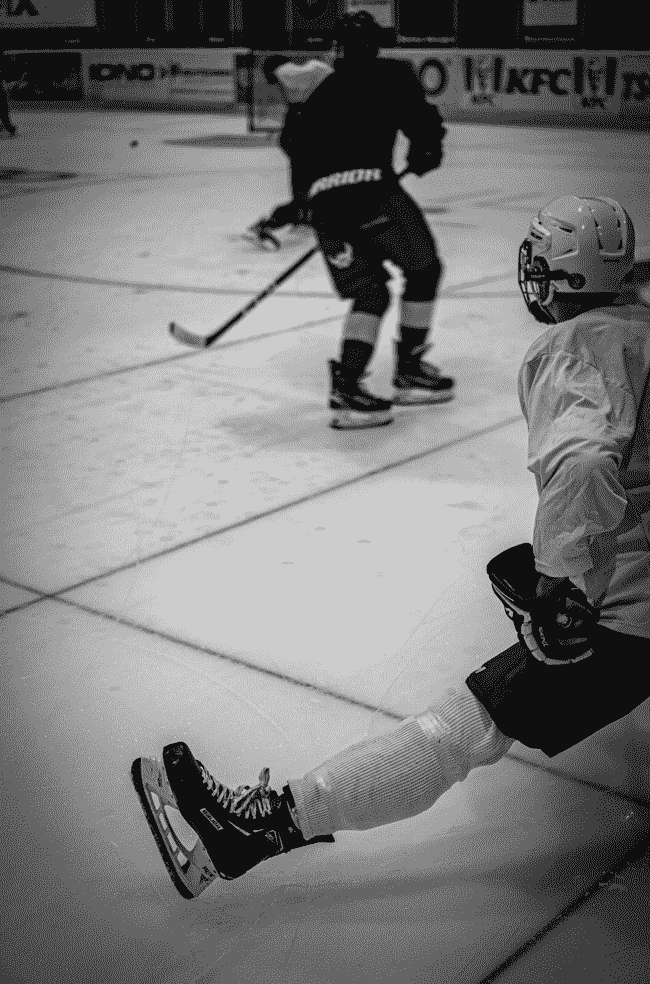Introduction:-Ice hockey, often referred to
simply as “hockey,” is a sport that epitomizes the essence of speed, precision, and physicality on ice. With its roots tracing back to the icy lakes of Canada in the late 19th century, this captivating sport has grown into a global phenomenon, drawing passionate fans and inspiring generations of athletes. In this 1200-word exploration of ice hockey, we will delve into the rich history, the essential components of the game, the evolution of the sport, and its prominent place in the hearts of fans around the world.
The Origins of Ice Hockey
Ice hockey has its origins in the crisp, cold winters of Canada, where British and French settlers created a game inspired by traditional stick and ball games played in their homelands. The earliest recorded ice hockey game took place in Montreal in 1875, and the sport quickly gained popularity across North America. It was a perfect match for the frozen lakes and rivers of the region, where players used improvised equipment, such as wooden sticks and frozen cow dung pucks.
The essential idea was simple: two teams competed to score goals by propelling a puck into the opponent’s net using sticks. Over time, the sport became more organized, and formal rules and regulations were established. The first indoor ice hockey game took place in 1877 in Montreal, marking a significant step in the sport’s development.
The Components of Ice Hockey
Ice hockey is a sport characterized by its breakneck pace and physicality. It is played on a rectangular ice rink with specific dimensions, surrounded by boards and glass to keep the puck in play. A standard ice hockey team consists of six players, including a goaltender and five skaters. Let’s explore the key components of the game:
Skates: Players wear specialized ice skates that allow them to glide effortlessly across the ice. These skates are designed to provide stability and agility, enabling quick movements.
Elevate your game with our sports content Ice hockey and Ice swimming. From rules to gear, find all you need to know about your favorite sports
Sticks: Each player wields a hockey stick, which is used for shooting, passing, and stickhandling. Sticks come in various lengths and flexes, allowing players to choose equipment that suits their playing style.
Puck: The puck is a hard, rubber disk that is approximately three inches in diameter and one inch thick. It is designed to slide smoothly across the ice, making it an essential component of the game.
Protective Gear: Given the physical nature of the sport, players wear a comprehensive set of protective gear, including helmets, face shields, shoulder pads, elbow pads, gloves, hip pads, shin guards, and skates.
Goal Nets: The goal nets are rectangular and set at opposite ends of the rink. The objective is to shoot the puck into the opponent’s net to score goals.
Goaltender Equipment: The goaltender, or goalie, wears specialized equipment to protect themselves and to effectively block shots. This gear includes a mask, chest protector, leg pads, and a catching glove.
The Evolution of Ice Hockey
Ice hockey has come a long way from its early days on frozen lakes, evolving into a highly organized and professional sport with a dedicated following. Some key milestones in the sport’s development include:
Formation of Leagues: Professional ice hockey leagues began to form in the early 20th century, with the National Hockey League (NHL) being established in 1917. The NHL has since become the premier league for the sport, featuring teams from both the United States and Canada.
Expansion: The NHL has expanded over the years, introducing new teams and extending the reach of ice hockey to cities across North America. Today, the league consists of 32 teams, making it one of the most prominent sports leagues in the world.
International Success: Ice hockey has gained international recognition, with the sport featuring prominently in the Winter Olympics and the IIHF World Championships. The rivalry between Canada, the United States, and other top nations has fueled the growth of the sport worldwide.
Women’s Hockey: Women’s ice hockey has also seen substantial growth, with international competitions and leagues springing up around the world. The excitement and skill of female players have attracted a dedicated fan base.
The Heart of the Game: Fans and Culture
Ice hockey is not just a sport; it’s a way of life for many of its enthusiasts. The fans of ice hockey are known for their fervent support, colorful traditions, and passionate commitment to their favorite teams. The culture surrounding the sport is deeply ingrained in the communities it touches. Here are a few aspects that make ice hockey culture unique:
The Stanley Cup: The Stanley Cup is the ultimate prize in the NHL, awarded to the league champions each year. It is one of the most iconic trophies in all of sports, with a rich history and a tradition of players taking it on “victory tours” to their hometowns.
Fandom and Rivalries: Ice hockey fans are known for their unwavering loyalty to their teams. Rivalries, such as the historic battles between the Montreal Canadiens and the Boston Bruins, add intensity to the sport and ignite passionate debates among fans.
Arena Atmosphere: The experience of attending an ice hockey game in person is truly unique. The arena atmosphere is electric, with fans cheering, waving team flags, and singing team anthems. The cold air, the sound of skates on ice, and the sight of the puck zipping across the rink create an unparalleled live experience.
Player Personalities: Ice hockey players are celebrated for their dedication, humility, and accessibility to fans. Many players actively engage with their communities, and their charitable efforts are widely recognized.
Diversity and Inclusion: Ice hockey has made strides in becoming a more inclusive sport, welcoming players and fans from diverse backgrounds. Initiatives to promote women’s hockey and introduce the sport to underserved communities have expanded the reach and impact of the game.
The Art of Play: Strategy and Skill
Beyond the culture and passion, ice hockey is a sport that demands exceptional skill and strategy. The game is often compared to a chess match on ice, with players making split-second decisions and executing intricate plays. Some key aspects of the sport’s strategy and skill include:
Passing and Shooting: Precise passing and accurate shooting are fundamental skills in ice hockey. Players must be able to deliver crisp passes to teammates and unleash powerful shots on goal.
Stickhandling: Stickhandling is the art of controlling the puck while maneuvering through defenders. A player with exceptional stickhandling skills can weave through traffic and create scoring opportunities.
Defensive Play: Defenders play a crucial role in ice hockey, blocking shots, intercepting passes, and clearing the puck from the defensive zone. The ability to read the game and anticipate the opponent’s moves is paramount.
Goaltending: Goaltenders are often considered the most critical players on the ice. Their quick reflexes, positioning, and mental toughness are vital to stopping pucks and keeping their team in the game.
Power Plays and Penalty Kills: Special teams play a significant role in ice hockey. Teams utilize power plays (advantage situations) and penalty kills (disadvantage situations) to swing the momentum of the game.
Conclusion
Ice hockey is a sport that transcends its humble beginnings on frozen ponds, captivating the hearts of fans and athletes worldwide. With a rich history, intense rivalries, and a culture that embraces diversity and inclusion, the sport has evolved into a global phenomenon. Ice hockey’s combination of speed, skill, and strategy makes it a thrilling and dynamic experience, whether you’re watching from the stands or lacing up your skates to take the ice. It’s a sport that continues to inspire generations and reminds us that, on the frozen surface of a rink, the world of possibilities is boundless.





